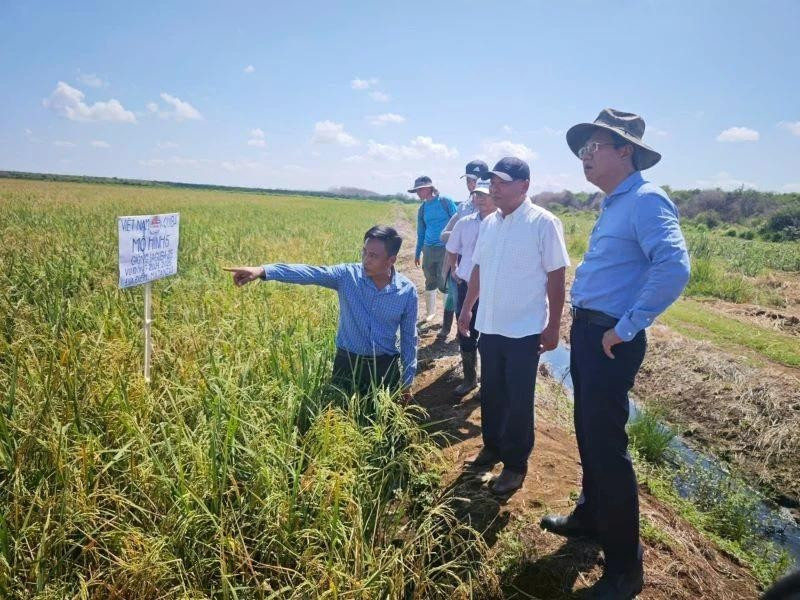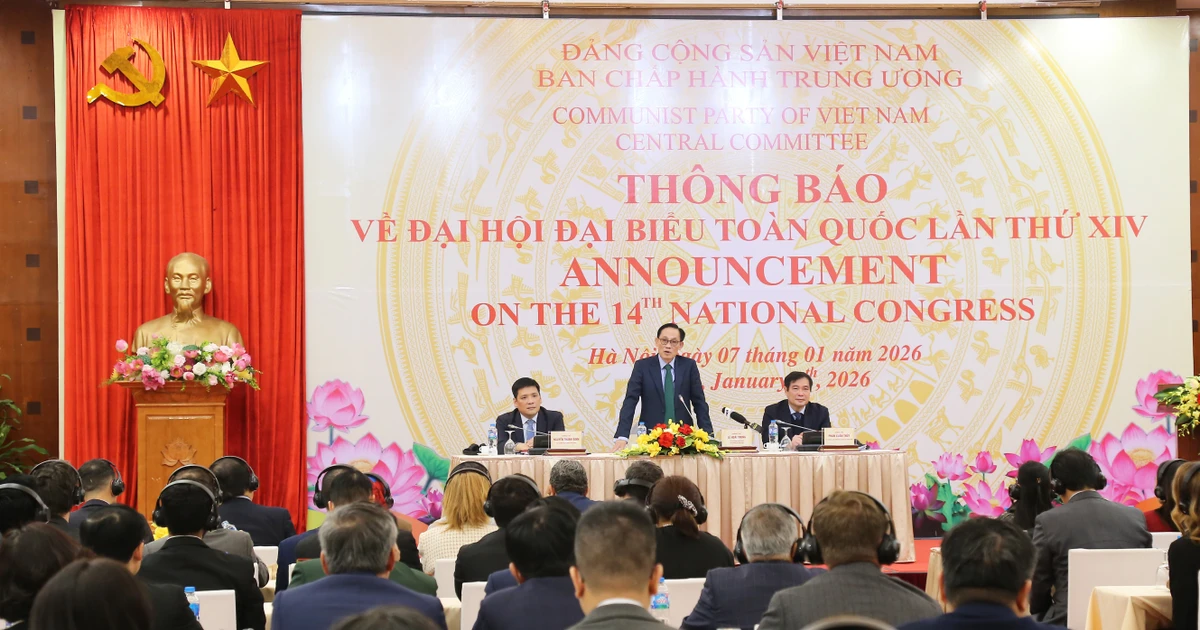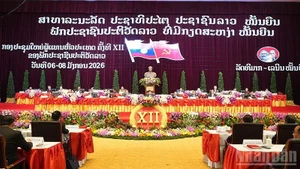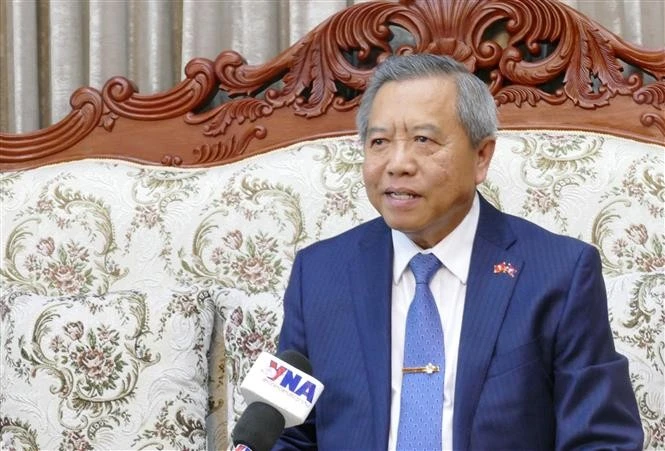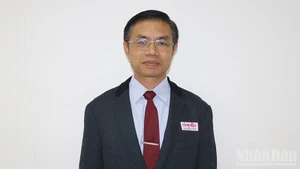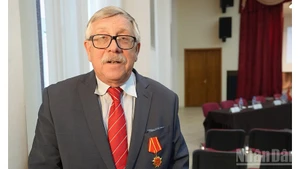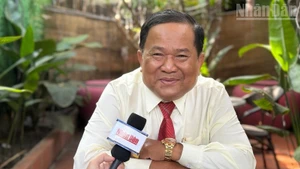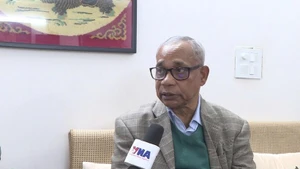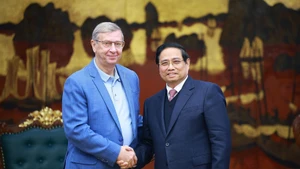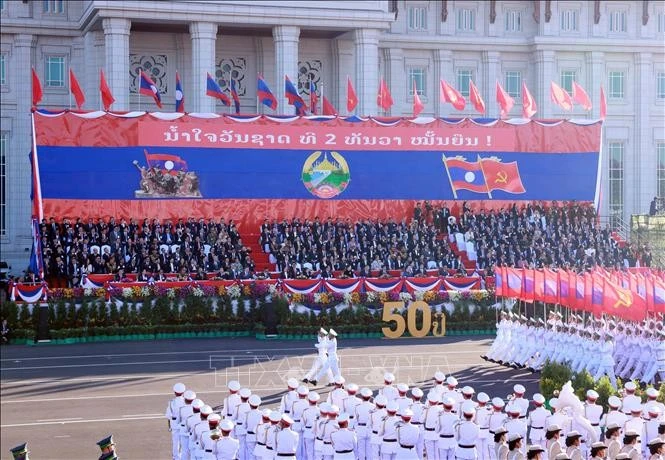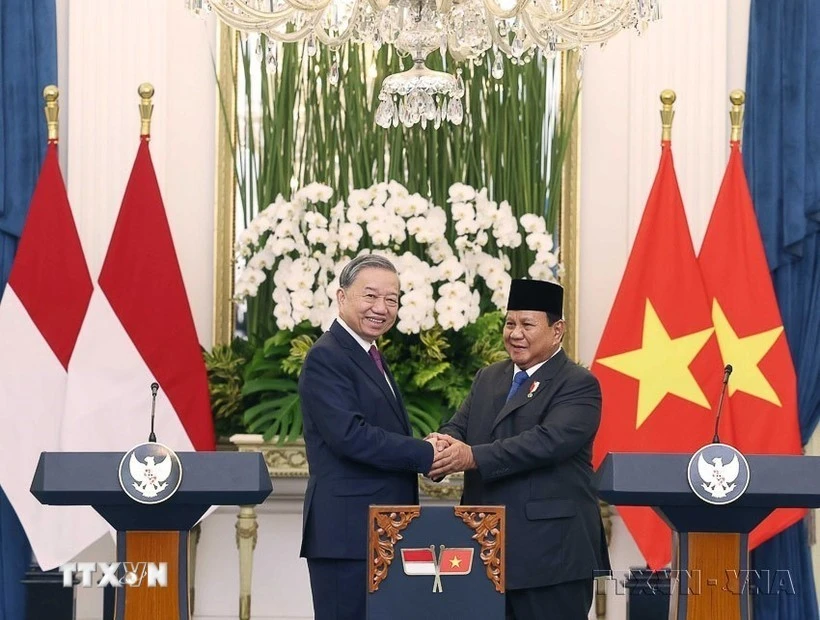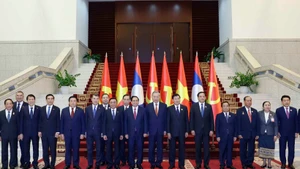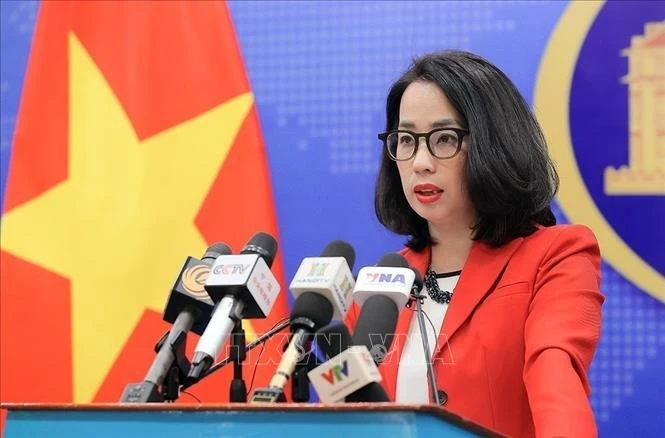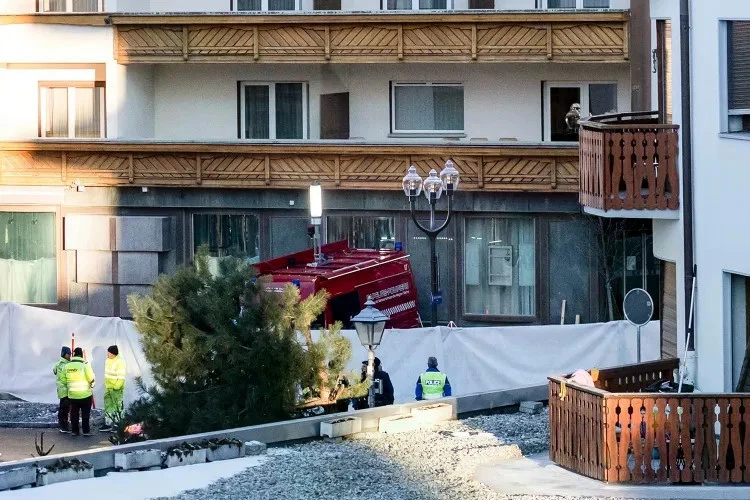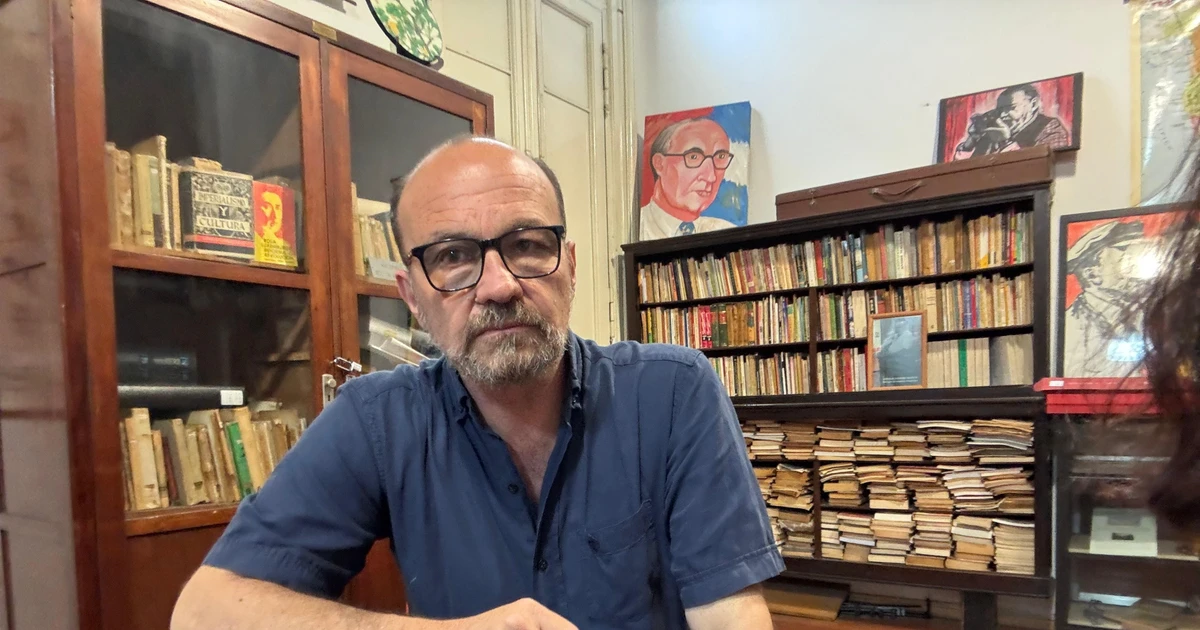On June 10 (local time), Vietnamese Ambassador to Cuba Le Quang Long visited and reviewed the implementation progress of the Viet Nam–Cuba rice production development project for the 2019–2023 period (Phase 5) at José Martí Farm in Calimete District, Matanzas Province.
This is one of the representative locations where production models under the project are being implemented. The project spans the provinces of Matanzas, Pinar del Rio, Artemisa, Mayabeque, Cienfuegos, Villa Clara, San Spiritus, Ciego de Avila, Camaguey, Holguin, Granma, and Las Tunas.
The project was initially scheduled to conclude by the end of 2023. However, due to nearly two years of disruption caused by the Covid-19 pandemic, the two governments agreed to extend its implementation until 2025. This decision reflects the deep and ongoing commitment of both sides to advancing agricultural cooperation and ensuring food security for Cuba.
According to the project management board and assessments by Cuban producers during site inspections, the project has achieved several positive outcomes, helping to improve rice productivity and quality compared to the national average. Throughout the 2020–2024 period, rice production models were implemented across all deployment areas with varying scales and levels of efficiency.
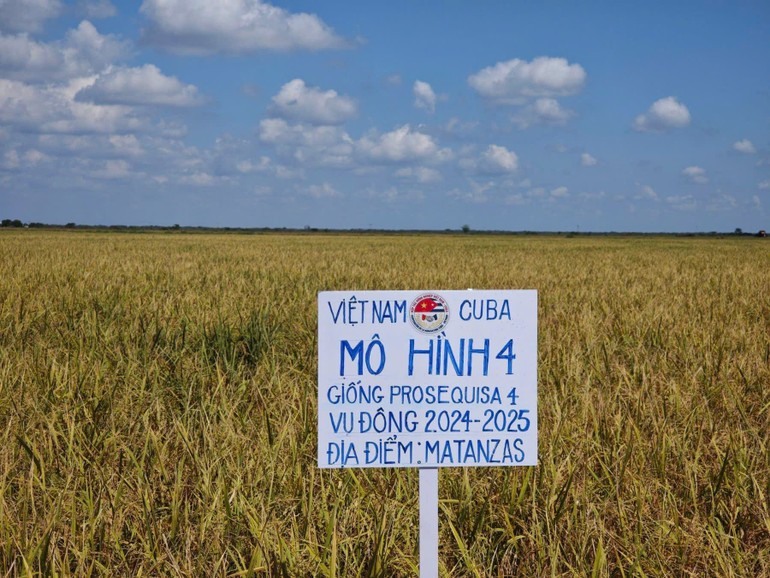
The "super-foundation seed" production model (Model 1) was carried out on an area of over 32,800 ha, achieving 164% of the initial target, with an average yield of 5.91 tonnes/ha, resulting in about 220 tonnes of seed paddy.
The "foundation seed" production model (Model 2) covered more than 783 ha, nearly 280% above the target, with an average yield of 5.75 tonnes/ha and a total output of over 4,500 tonnes.
The "certified seed I" production model (Model 3) was implemented on around 1,550 ha, achieving over 155% of the target, with an average yield of 5.16 tonnes/ha and over 8,000 tonnes of harvested product.
Meanwhile, the "two-season intensive farming" model (Model 4) was implemented on nearly 9,850 ha, exceeding 102% of the target, with an average yield of 8.58 tonnes/ha/year. The total yield from both seasons surpassed 42,000 tonnes. Notably, in the winter-spring season of 2024–2025 alone, the model achieved a yield of 11.16 tonnes/ha/year from two cultivation cycles, which was three to four times higher than the national average.
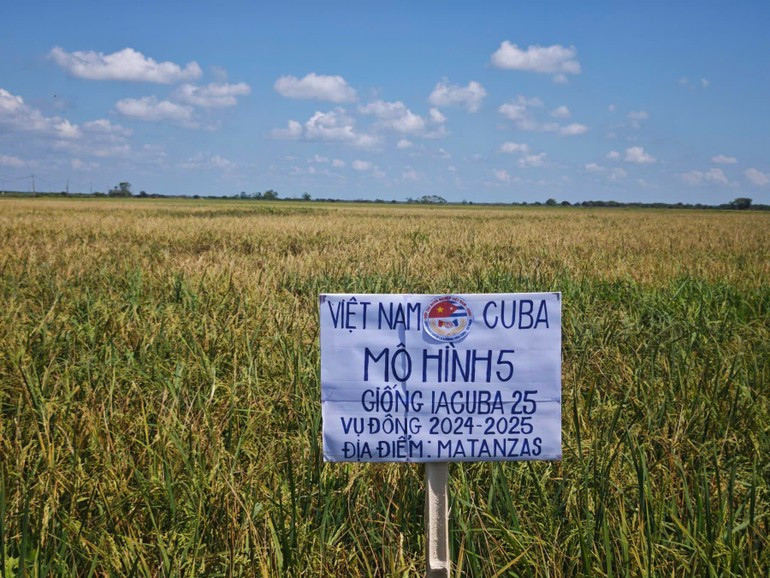
The "expanded production" model (Model 5), which had the largest scale, reached nearly 76,000 ha, equivalent to 95% of the project’s target area. Although the average yield was just 3.16 tonnes/ha, it still exceeded the national average by over 1 tonne/ha, with total output surpassing 240,000 tonnes. Specifically, during the winter-spring season of 2024–2025, the sowing area under this model reached more than 5,700 ha.
In terms of technical infrastructure, significant improvements in field levelling were recorded. Over 4,700 ha were levelled using laser technology, while more than 3,400 ha were manually levelled. The irrigation system was reinforced through the construction and renovation of over 2,750 km of dykes, nearly 6,000 km of canals, and 594 hydraulic works, ensuring a stable water supply for production.
In training, the project organised more than 3,398 technical guidance activities, reaching over 29,000 Cuban farmers, producers, and technicians. Several Cuban expert and trainee delegations were also sent to Viet Nam for experience exchange and hands-on learning.
According to the Cuban side, a total of 25 rice varieties have been introduced into production across the project areas. Among them, four varieties have met official registration standards and were named "ViBa", a blend of Viet Nam and Cuba, symbolising the solidarity between the two nations. The total value of imported equipment and supplies for the project implementation is estimated to exceed 17 million USD, contributing to improved productivity and sustainability.
During the visit, Ambassador Le Quang Long highly praised the efforts of Vietnamese experts and the project management board in transferring technology, upgrading production infrastructure, and supporting the local population.
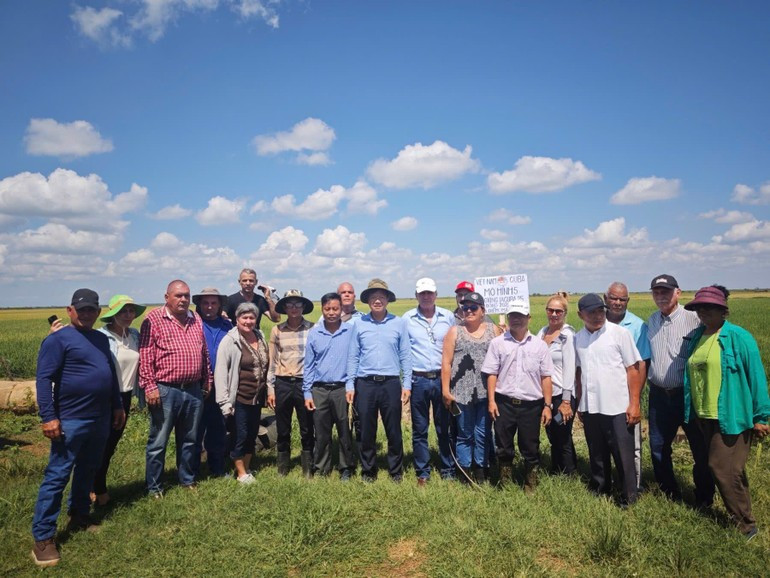
Emphasising the significant meaning of the Viet Nam–Cuba rice production cooperation project implemented in Calimete District, as well as across Cuba in general, Ambassador Le Quang Long stated that this pilot initiative for grain crop development serves as an effective model that should be replicated in the future.
Ambassador Le Quang Long affirmed that the governments of Viet Nam and Cuba remain fully committed and will continue to create all favourable conditions to ensure the continued development of this project and its contribution to Cuba’s food security mission.
The Viet Nam–Cuba Cooperation Project on Rice Production Development for the 2019–2023 period has not only yielded positive technical and production results but also represents a vibrant symbol of the enduring friendship, solidarity, and effective collaboration between the two peoples amid numerous global challenges and uncertainties.
